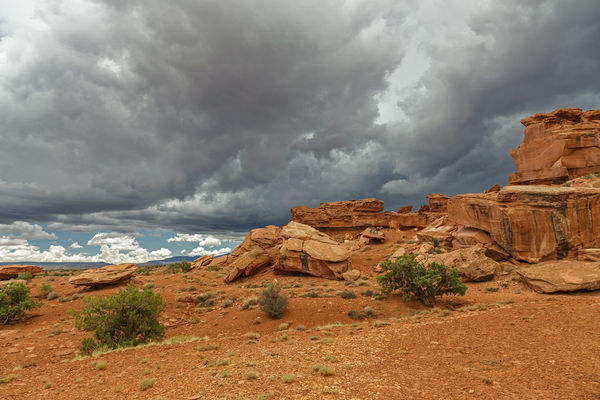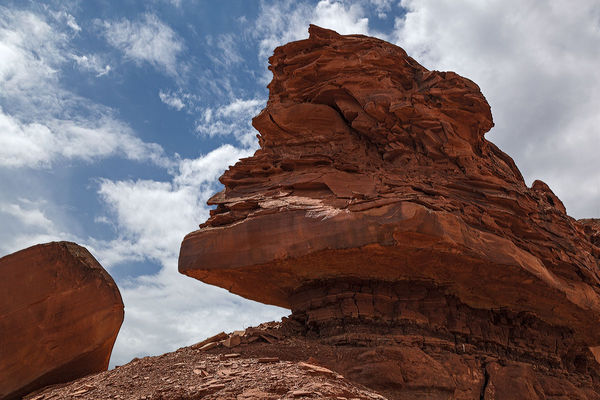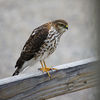Best PC Monitor for Editing.
Nov 15, 2013 07:43:25 #
sueyeisert
Loc: New Jersey
Look at Shutterbug Magazine David Brooks who write the tech support column recommends monitors.
MaggieMay1978 wrote:
I have a brand new screen, but whatever I do to calibrate doesn't show colours efficiently. What Monitor do I purchase?
Nov 15, 2013 07:45:59 #
sueyeisert
Loc: New Jersey
EstherP wrote:
How large a room do you need for a set-up like that?
With a computer in an 8-foot den, you'd have to cut a hole in the wall to sit far enough back....
Naw, that's digging in the pocketbook too deep: TV plus den reno, I'll stick with my 21" monitor!
EstherP
With a computer in an 8-foot den, you'd have to cut a hole in the wall to sit far enough back....
Naw, that's digging in the pocketbook too deep: TV plus den reno, I'll stick with my 21" monitor!
EstherP
:thumbup: :thumbup: :thumbup:
Nov 15, 2013 08:17:35 #
I don't think it matters much which monitor you use. The important thing is that it must be calibrated regularly and for changing ambient light conditions. The Spyder 4 Pro costs about $170 and comes with a license for use on all of your computers, including laptops and (TVs with a HD upgrade). Start with the Spyder; even a $1,400 monitor needs to be calibrated. I couldn't believe my eyes when the Spyder adjusted my new i7 laptop from a cold blue haze to vibrant, warm, rich color. Take a walk through the TV department at your local Wal-Mart and see that there is no consistency out of the box. You gotta calibrate!
Nov 15, 2013 10:48:52 #
DITTO.
RolandComfort wrote:
I don't think it matters much which monitor you us... (show quote)
Red Shale Formation, Capitol Reef NP

Nov 15, 2013 11:01:48 #
The bottom line is, if you want the outcome you are seeking, you are going to have to invest in a color reference monitor and a color calibrator. I like what LaCie has put out. NEC and Eizo also produce color reference monitors.
Once I determined what monitors would be acceptable to me I shopped, or kept an eye out on the used market, both on ebay and craigslist. I eventually (not too long really) I was able to purchase both a color reference monitor matching calibration too (with software) for $125.
Once I determined what monitors would be acceptable to me I shopped, or kept an eye out on the used market, both on ebay and craigslist. I eventually (not too long really) I was able to purchase both a color reference monitor matching calibration too (with software) for $125.
MaggieMay1978 wrote:
I have a brand new screen, but whatever I do to calibrate doesn't show colours efficiently. What Monitor do I purchase?
Nov 15, 2013 11:13:00 #
MaggieMay1978 wrote:
I have a brand new screen, but whatever I do to calibrate doesn't show colours efficiently. What Monitor do I purchase?
If it is brand new out of the box there should be instructions either in the box or on a CD as to making the adjustments needed.
Nov 15, 2013 11:38:53 #
Red Shale Formation processed on a calibrated monitor, no doubt! I can tell because it looks great on my very modest, un-calibrated Dell monitor here at work. Which brings up another point; if you process for the internet you absolutely need to calibrate to reference because most of your viewers' monitors, phones, tablets, and whatever will be out of whack somewhat. Calibrating limits the cumulative effect of a poorly calibrated monitor causing you to incorrectly color grade pictures that end up looking even worse on all the other inconsistent monitors viewing your work.
Nov 15, 2013 11:41:01 #
MaggieMay1978 wrote:
I have a brand new screen, but whatever I do to calibrate doesn't show colours efficiently. What Monitor do I purchase?
Here's an article that will give you some insight into different types of computer monitors. There's a good chance you don't have the right one for photo editing. This article is several years old, but it still holds true today.
http://photographylife.com/best-monitor-for-photography
Nov 15, 2013 11:47:08 #
For years the various graphics industries have relied on Apple products as their standard. Calibration would still be advised though I'm not sure you need a third party devise to do it.
Nov 15, 2013 11:56:18 #
Its more complicated than that. Thinking that you can adjust your monitor yourself is like thinking you can paint like Rembrandt because you bought some paint and brushes. There are infinite combos of gamma, contrast, black, white, gradient banding, etc. Don't fight it. Buy a good calibration system like the Spyder 4 Pro or better.
Nov 15, 2013 12:50:58 #
Thanks for kind words re my picture. Yes, I do my photo editing on a color-calibrated monitor. One must use a calibrated monitor in order to produce photographs with the intended results.
After all, the serious photographer goes to lengths to obtain a good exposure using his gear. Later, in the editing software, he will try to bring out the potential of the photograph, including its colors and their true tonality. A color-calibrated monitor enables this result.
Typically, a monitor properly calibrated will allow the printer to issue a print very close to that image seen on the monitor, usually on the first try. Avoiding multiply prints in search of a good one saves a bundle of cash in terms of ink and photo paper unwasted, and also one's time and energy.
Note that editing software should contain a setting to save a photo in sRGB file format. This setting almost all modern monitors use to display an image. The displayed image then more closely matches the original image across monitors.
To save image files this way in Photoshop, click on File in the menu bar. In the drop-down menu, click on Save for Web. Doing so brings up a dialog box. You will see a check box for Convert to sRGB. Check it.
You will also see in another box nearby the wording "Internet Standard RGB (No color management)." As best I understand, this file format displays the image without any further processing, so that the image appears elsewhere as saved.
After all, the serious photographer goes to lengths to obtain a good exposure using his gear. Later, in the editing software, he will try to bring out the potential of the photograph, including its colors and their true tonality. A color-calibrated monitor enables this result.
Typically, a monitor properly calibrated will allow the printer to issue a print very close to that image seen on the monitor, usually on the first try. Avoiding multiply prints in search of a good one saves a bundle of cash in terms of ink and photo paper unwasted, and also one's time and energy.
Note that editing software should contain a setting to save a photo in sRGB file format. This setting almost all modern monitors use to display an image. The displayed image then more closely matches the original image across monitors.
To save image files this way in Photoshop, click on File in the menu bar. In the drop-down menu, click on Save for Web. Doing so brings up a dialog box. You will see a check box for Convert to sRGB. Check it.
You will also see in another box nearby the wording "Internet Standard RGB (No color management)." As best I understand, this file format displays the image without any further processing, so that the image appears elsewhere as saved.
RolandComfort wrote:
Red Shale Formation processed on a calibrated moni... (show quote)
Red Shale Formation, Capitol Reef NP

Nov 15, 2013 13:08:30 #
Might want to check out:
X-rite Festival of Color Calibration
THREE-PART LIVE WEBINAR SERIES: PERFECT COLOR
http://www.macgroupus.com/xrite/webinar/XRite-Webinar-November2013-Invite.html
X-rite Festival of Color Calibration
THREE-PART LIVE WEBINAR SERIES: PERFECT COLOR
http://www.macgroupus.com/xrite/webinar/XRite-Webinar-November2013-Invite.html
Nov 15, 2013 13:08:47 #
Well said!
The color temperature of the lightsource and surfaces it reflects off of is important but so is the Color Rendition Index (CRI). The desired temperature of the light source often depends on what one wants to look at. For instance flesh tones look better in lower (warmer) color temp light in the 2,000 - 3,500k range. Restaurants, bars and grocery meat cases use low temp lighting to make people and meat look more appealing. (No pun intended about the bar-meat anaology). If one is looking at outdoor scenes one will get more realistic view of prints if the color temp of the lamp approaches the color of mid-day outdoor light which ranges from 4,000 - 6,000k and higher. But then again mid-day light is not very flattering to people or many lanscape shots. Many photographers know the advantages of photographing early or late in the day for the warmer color temperatures and longer sometimes softer shadows.
As important and some would argue more important than the color temperature of the lightsource, is the Color Rendition Index or CRI. Look for lamps with color temps in with CRIs 90 or higher.
Most standard incandescent lamps (light bulbs) and most halogen lamps have good (high) CRIs. The lamp shade or reflector can affect the color so depending you may need to remove the shade to improve color rendition.
Most but not all compact fluorescents have notoriously poor CRIs no matter the color tempearture. Select carefully.
Some new LEDs have very poor CRIs and others very good CRIs. The SORAA GaN LED is available as the SORAA Vivid MR 16 model with a CRI of 95. This lamp can be used as a retrofit to replace lamps with a similar base. But then again many incandescent MR16s can be had with good color temp and high CRI. CREE also makes LEDs with high CRIs. But the big advantage of LEED over incandescent lamps is low energy use and very long life.
Putting this all together, look for lamps with color temps in the 2,500 -3,500k range for viewing skin tones or early morning later afternoon and warmer indoor scenes and in perhaps in the 5,000 - 6,000 range for outdoor mid-day and cooler indoor office scenes and all with CRIs 90 or higher. If you can only use one main light source maybe go in the mid-color range around 4,000k and CRI 90 or as high above as you can find. The higher CRI the better.
The color temperature of the lightsource and surfaces it reflects off of is important but so is the Color Rendition Index (CRI). The desired temperature of the light source often depends on what one wants to look at. For instance flesh tones look better in lower (warmer) color temp light in the 2,000 - 3,500k range. Restaurants, bars and grocery meat cases use low temp lighting to make people and meat look more appealing. (No pun intended about the bar-meat anaology). If one is looking at outdoor scenes one will get more realistic view of prints if the color temp of the lamp approaches the color of mid-day outdoor light which ranges from 4,000 - 6,000k and higher. But then again mid-day light is not very flattering to people or many lanscape shots. Many photographers know the advantages of photographing early or late in the day for the warmer color temperatures and longer sometimes softer shadows.
As important and some would argue more important than the color temperature of the lightsource, is the Color Rendition Index or CRI. Look for lamps with color temps in with CRIs 90 or higher.
Most standard incandescent lamps (light bulbs) and most halogen lamps have good (high) CRIs. The lamp shade or reflector can affect the color so depending you may need to remove the shade to improve color rendition.
Most but not all compact fluorescents have notoriously poor CRIs no matter the color tempearture. Select carefully.
Some new LEDs have very poor CRIs and others very good CRIs. The SORAA GaN LED is available as the SORAA Vivid MR 16 model with a CRI of 95. This lamp can be used as a retrofit to replace lamps with a similar base. But then again many incandescent MR16s can be had with good color temp and high CRI. CREE also makes LEDs with high CRIs. But the big advantage of LEED over incandescent lamps is low energy use and very long life.
Putting this all together, look for lamps with color temps in the 2,500 -3,500k range for viewing skin tones or early morning later afternoon and warmer indoor scenes and in perhaps in the 5,000 - 6,000 range for outdoor mid-day and cooler indoor office scenes and all with CRIs 90 or higher. If you can only use one main light source maybe go in the mid-color range around 4,000k and CRI 90 or as high above as you can find. The higher CRI the better.
Nov 15, 2013 13:17:25 #
Out of the two examples, What's up with those?
I like the second one the better is that the "Right one"?
Did you use a different method?
Why are they so different?
The top is Orange and the bottom Red . Thanks ~Tim~
You should conceder showing one that is unedited and than edit than lets us edit the first and compare them all . :-o
I like the second one the better is that the "Right one"?
Did you use a different method?
Why are they so different?
The top is Orange and the bottom Red . Thanks ~Tim~
You should conceder showing one that is unedited and than edit than lets us edit the first and compare them all . :-o
Nov 15, 2013 13:19:50 #
RolandComfort wrote:
Its more complicated than that. Thinking that you can adjust your monitor yourself is like thinking you can paint like Rembrandt because you bought some paint and brushes. There are infinite combos of gamma, contrast, black, white, gradient banding, etc. Don't fight it. Buy a good calibration system like the Spyder 4 Pro or better.
I didn't say it would be easy, I said that I don't know if a third party devise is necessary. For all I know Apple has its own calibration.
If you want to reply, then register here. Registration is free and your account is created instantly, so you can post right away.






